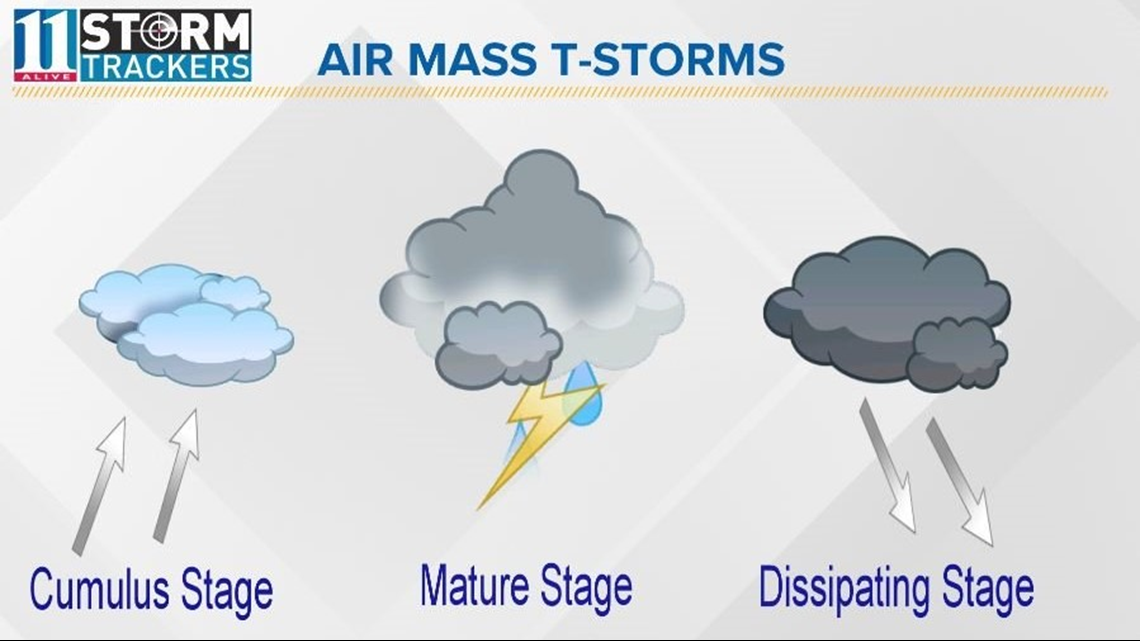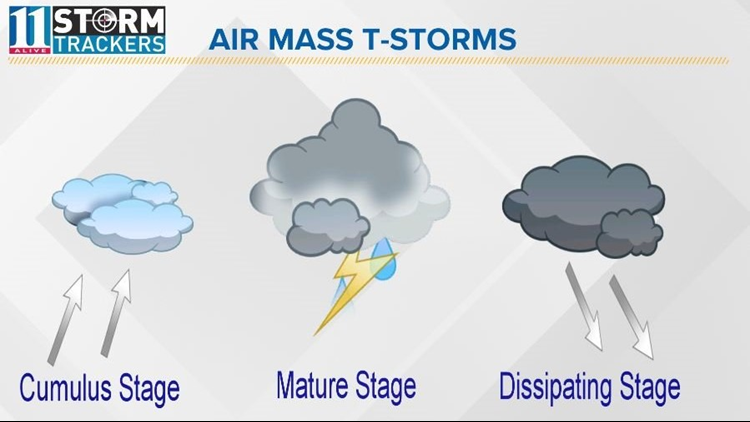We have slipped into a normal mid-summer weather pattern of warm, humid days with pop-up thunderstorms in the afternoons and evenings.
But what does that mean?
11Alive Meteorologist Chesley McNeal says that while the pattern itself is as predictable as death and taxes, predicting exactly where a pop-up or an air mass thunderstorm will form can be a more tricky proposition.
The day-to-day mechanism is the same across the board.
In the morning, usually, we will end up with very steamy, humid conditions. Sometimes, there will be fog in the low-lying areas, but any fog will very quickly burn off as the sun rises.
Temperatures very quickly rise into the upper 80s or lower 90s, while the air remains humid. Skies are usually clear to partly cloudy.
As the day progresses, the heat rises along with the moisture -- which condenses, forming clouds in the Cumulus Stage.
Later in the day, as the moisture continues to condense the clouds continue to build, showers and storms begin to form in some areas, but not others. This is termed the Mature Stage.
Since these storms are formed in an otherwise calm wind area, they tend not to move very much, drifting at a speed of fewer than 15 miles per hour or even remaining stationary until they rain themselves out. This can cause problems due to significant rainfall amounts, along with high winds, small hail and vivid lightning in the immediate area of the storm cell.
Dangers brought about by pop-up thunderstorms include flash flooding that appears with little or no warning. This is not limited to streams, as was shown by last week's urban flooding along the lanes of Atlanta's Downtown Connector.
Other dangers include high wind gusts and dangerous lightning. Both can bring down large trees and lightning can spark fires.


While pop-up thunderstorms can wreak havoc across an area, they tend to lose their energy after the sun goes down, taking with it the heating of the day. Usually, they die out by 11 p.m. or midnight. This final stage is called the Dissipating Stage.
Until the overall weather pattern shifts, the cycle tends to repeat day after day.
While the pattern itself repeats, the specific area that individual thunderstorm cells form over can't be predicted on a day-to-day basis, which means that some areas may see storms one day, while on other days they remain dry.
► UPLOAD | Send us your weather pictures here
► Download the FREE 11Alive News app now in the iTunes store or on Google Play.
► POWER OUTAGES CHECK | Georgia Power customers, check here. Georgia EMC customers check here.
► Have a news tip? Email news@11alive.com, visit our Facebook page or Twitter feed.


